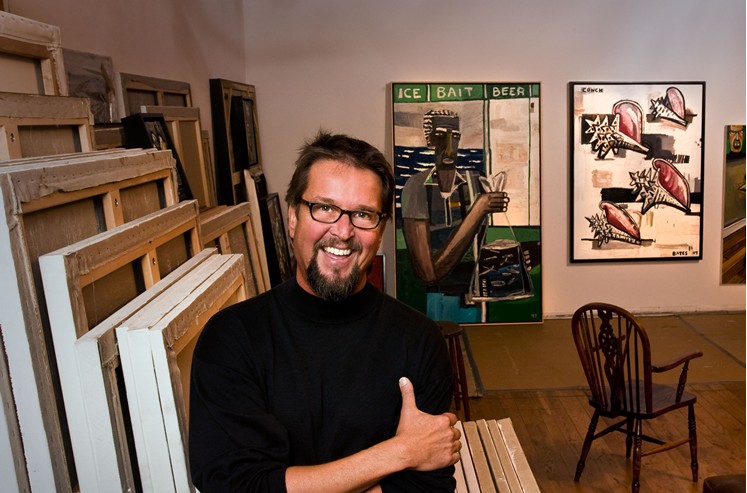This feature originally appeared in the February issue of D Magazine.
David Bates bounces around a storage room crammed with his art at Talley Dunn Gallery. He’s a bit frazzled, for good reason. It’s November, and he has less than three months to prepare for one of the biggest exhibitions of his life, a retrospective that will be mounted simultaneously at the Nasher Sculpture Center and the Modern Art Museum of Fort Worth. He has been fretting over drafts of the forthcoming exhibition catalog and running back and forth to his foundry in Houston to oversee the casting of new bronzes. Further throwing his life in disarray, Bates is moving his studio. In the storage room, a few blocks south of SMU, paintings cover the walls, sculptures sit on pedestals, yet more paintings and smaller sculptures fill storage racks. Much of the work is recent still lifes, mostly flowers, magnolias in particular. Bates picks up some little bronze skulls and casually tosses one into the garbage with a laugh, a self-deprecating knock on his own work.
Unlike his portraits, which often render the human figure in a virile jangle of angular and confident brushstrokes, Bates has a rounded, unassuming, almost nondescript appearance. He’s cheery and approachable, given to affecting accents when he tells stories, taking particular delight in tales of clueless curators describing his Southern landscapes and portraits of Gulf Coast fisherman hunched over dragnets.
“They’d say, ‘Ham-handed, clumsy, sort of stupid shapes and forms, Cro-Magnon drawing style, lots of big black lines,’ ” he says. “And I’m like, well, none of that sounded good, but I do agree with you.”
For someone who has managed a 35-plus-year career, the 61-year-old artist has surprisingly little patience for the lingo and pretension that typify the world of contemporary art. Rather, when Bates talks about painting, it sounds more like fishing. There’s a strategy and a process, best learned by receiving wisdom passed down through generations. At first glance, his work can look startlingly old-fashioned. Throughout his career, he has returned again and again to the most traditional forms of painting: still lifes, portraits, and landscapes. And yet it is precisely this approach that has won him a reputation as a maverick. He is the rare interpreter of flowers, sculptor of busts, and etcher of majestic birds that the art world hasn’t shunned. To the contrary, he has racked up nearly every accolade it can bestow upon an artist. He has been exhibited by major biennials, collected by the biggest museums, and acquired by important collectors. His acceptance, however, has come with a full measure of skepticism.
“In fashionable art-world circles the paintings of David Bates are considered conservative if not reactionary or, at best, guilty pleasures, if they are considered at all,” wrote the New York Times’ co-chief art critic, Roberta Smith, in 2006. “If I wanted to signal my agreement I would say that I like them against my better judgment, but in truth I just like them.”
To read the rest, click over to the article here. David Bates: Retrospective runs February 9-May 11 with an emphasis on painting at the Modern Art Museum of Fort Worth (3200 Darnell St., Fort Worth, 817-738-9215) and sculpture at the Nasher Sculpture Center (2001 Flora St., 214-242-5100)





